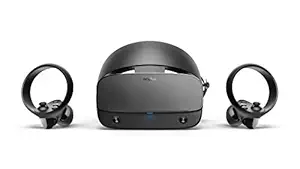Samsung VR Headsets
When it comes to VR headsets, Samsung is a big name to reckon with. The company offers a wide range of VR headsets under its Gear VR series. Some of the popular models include the Gear VR (2016), Gear VR (2017), and Gear VR with Controller. All these VR headsets are compatible with Samsung smartphones.
One of the biggest USPs of Samsung VR headsets is their compatibility with a wide range of Samsung smartphones. Whether you have the latest Galaxy S10 or an older Galaxy S7, you can use any of the Gear VR headsets. This is not the case with other VR headsets like Oculus Rift, which require a high-end PC for powering the VR experience. Samsung VR headsets are also relatively more affordable than Oculus Rift.
When it comes to design, Samsung VR headsets look similar to other headsets in the market. But, the company has made some refinements in the design of the latest Gear VR with Controller. For instance, the field of view has been increased to 101 degrees. The straps have also been redesigned for providing a better fit.
The Gear VR headsets from Samsung offer a good VR experience. But, they are not the best in the market. The Oculus Rift is still the gold standard when it comes to VR headsets. But, it is also much more expensive than Samsung VR headsets. The HTC Vive is another popular VR headset. But, it requires a high-end PC for powering the VR experience.
Oculus VR Headsets
Oculus is a VR headset company that was founded in 2012. The company is owned by Facebook.
The company's first product was the Oculus Rift, which was released in 2016. The Rift is a VR headset that allows users to experience virtual reality. The headset comes with a controller that allows users to interact with the VR environment. The Rift has a resolution of 1080x1200 pixels per eye and a 90 Hz refresh rate.
The company's second product is the Oculus Quest, which was released in 2019. The Quest is a standalone VR headset that does not require a PC to run. The Quest has a resolution of 1600x1440 pixels per eye and a 72 Hz refresh rate. The Quest also comes with two controllers that allow users to interact with the VR environment.
The company's third product is the Oculus Go, which was released in 2018. The Go is a standalone VR headset that does not require a PC to run. The Go has a resolution of 1280x1440 pixels per eye and a 60 Hz refresh rate. The Go comes with a single controller that allows users to interact with the VR environment.
Oculus has a few major competitors, such as HTC, Sony, and Microsoft. Oculus is one of the leading VR headset companies and is constantly innovating to bring new and improved VR experiences to users.







